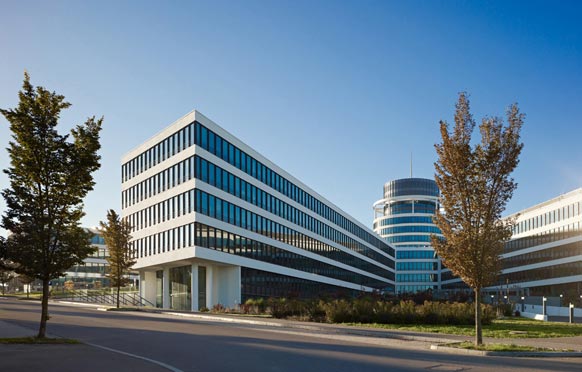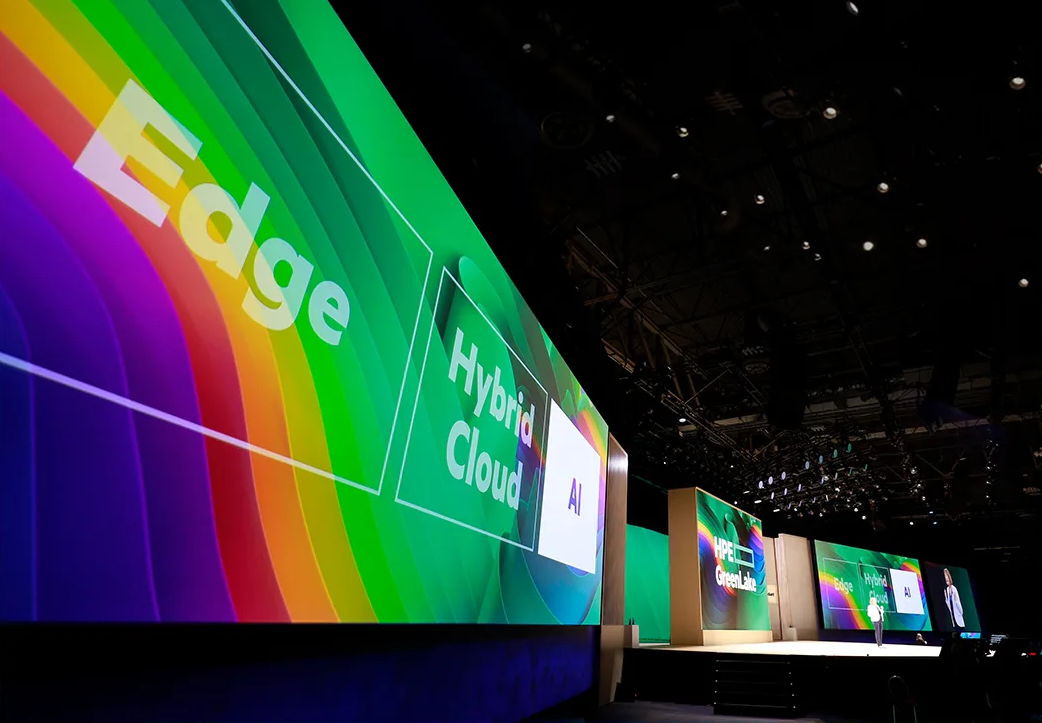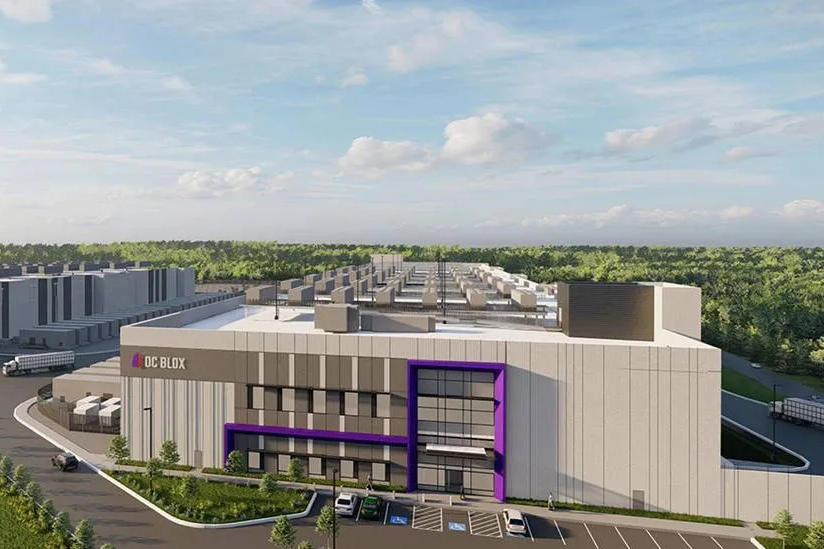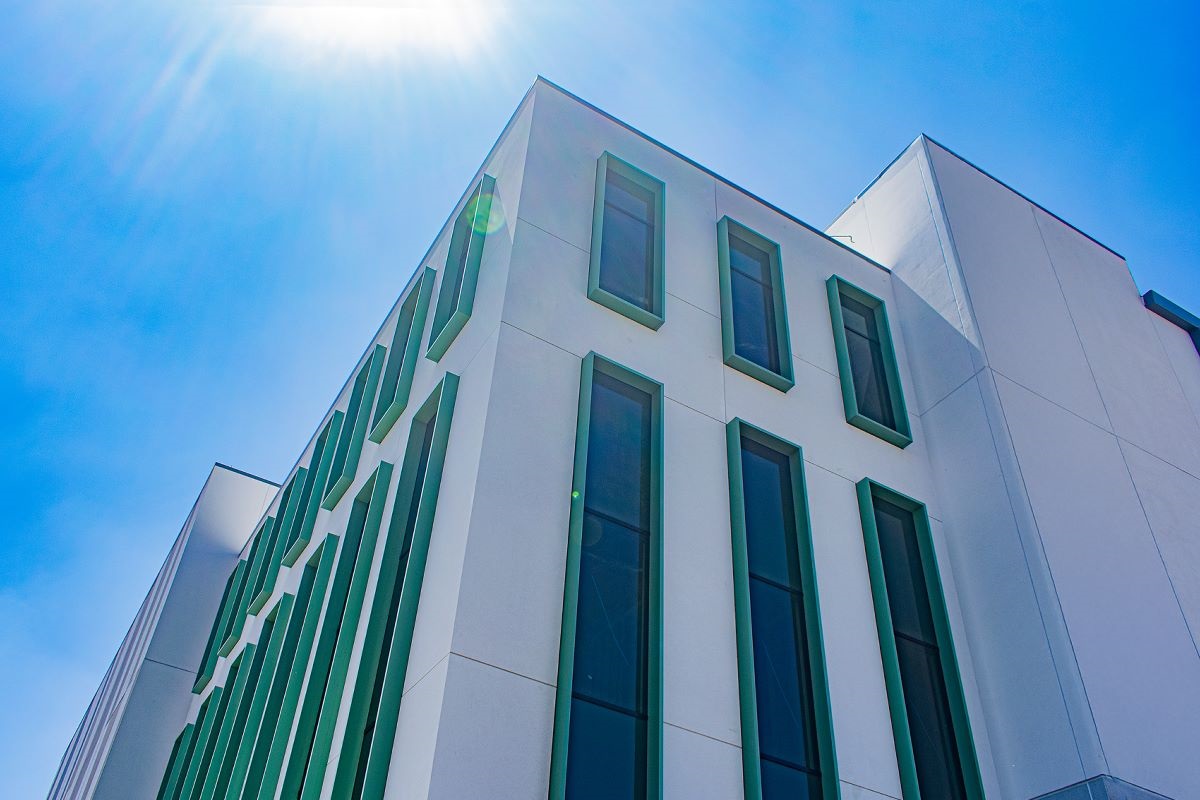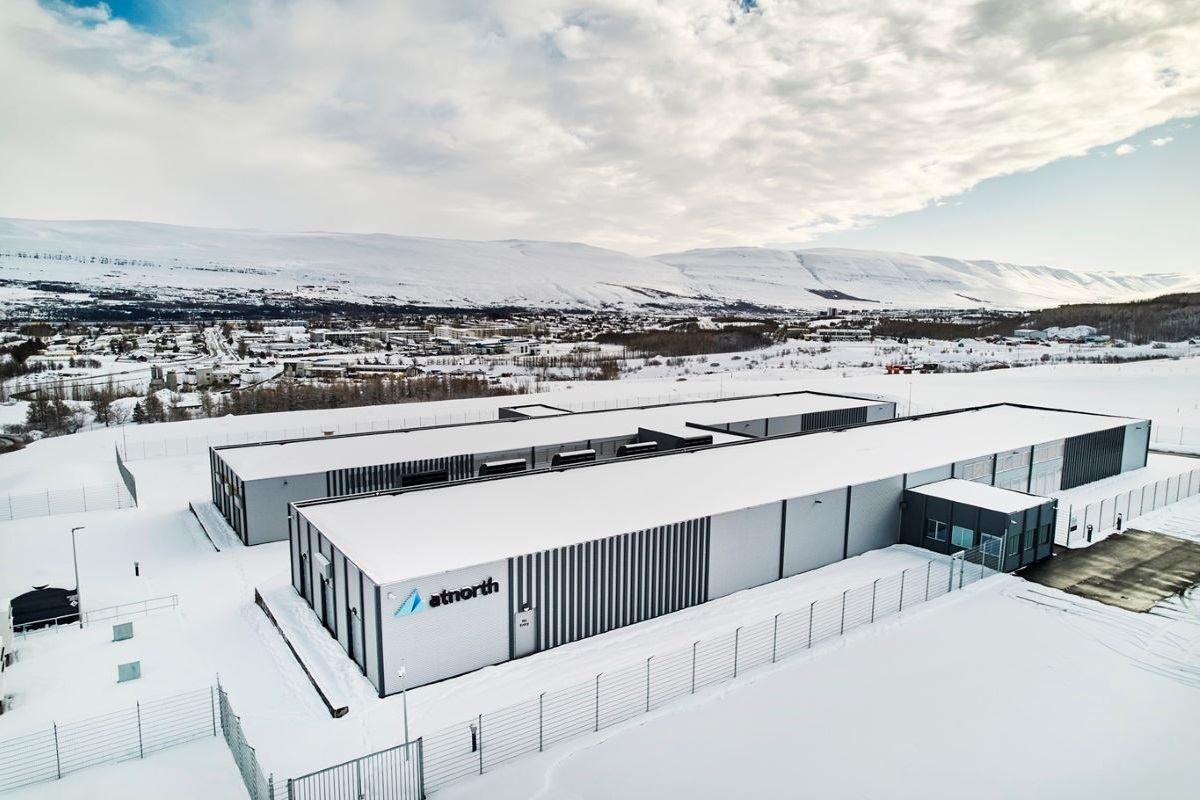Data Centre Operations: Optimising Infrastructure for Performance and Reliability
Colocation Strategies for Scalable Data Centre Operations
Data Centre Operations: Optimising Infrastructure for Performance and Reliability
Data Centres
News
Portus Data Centers expands underground Luxembourg facility
Portus Data Centers today announced the rebranding of European Data Hub (EDH), its colocation data centre in Luxembourg, to Portus Data Centers Luxembourg.
At the same time, the company has announced the site’s expansion with a further 1,350 square metres of white space and an additional power increase project, which will bring the total IT load capacity to 3.4 MW.
Located in the heart of Luxembourg in the expanding business district of the Cloche d’Or, Portus Data Centers Luxembourg is built completely underground, allowing customers to house, host and manage their critical IT infrastructure in a highly secure, sustainable, and resilient environment.
Powered by 100% renewable energy sources, the facility is certified Tier IV by the Uptime Institute, and operates in accordance with major industry standards, including ISO 9001, ISO14001, ISO50001, ISO 27001 and EN-50600-2. It equally offers redundant connectivity via a host of national and international carriers.
“As a part of the Portus Data Centers Group, we gain access to valuable resources, expertise and support that enables us to invest in innovation and development, further strengthening our position in the industry and enhance the services we offer to the market,” says David Celis, CEO, Portus Data Centers Luxembourg. “At the same time, the significant expansion of space and power announced today will ensure more growth opportunities for our growing portfolio of customers.”
Adriaan Oosthoek, Chairman of Portus Data Centers, adds, “This is yet another step in the execution of the buy and build growth strategy that Portus Data Centers has defined. We are seeing strong demand in the Luxembourg market which is in line with other key growing regional data centre markets in Europe - driven by the increase in organisations looking to outsource their IT and networking infrastructure to high quality colocation facilities.”
For more from Portus, click here.
Simon Rowley - 27 November 2024
Data Centre Build News & Insights
Data Centre Operations: Optimising Infrastructure for Performance and Reliability
Data Centre Projects: Infrastructure Builds, Innovations & Updates
News
News in Cloud Computing & Data Storage
Nationwide migrates IT estate to HPE GreenLake cloud
Hewlett Packard Enterprise today announced that Nationwide Building Society has selected HPE GreenLake cloud for its private cloud deployment, enabling it to accelerate its hybrid cloud journey. With the addition of HPE GreenLake Management Services as a strategic cloud services provider, Nationwide is now using the power of cloud technology to support the evolving needs of its customers.
In 2018, Nationwide kick-started an ambitious journey to ensure it was primed for the next generation of digital innovation, with its hybrid cloud strategy being driven by the need for different cloud environments for various types of data and workloads. Leveraging the comprehensive capabilities of HPE GreenLake, Nationwide is creating an agile, scalable, secure, resilient, and efficient technology platform.
“In today’s world our customers expect us to deliver an always-on service whilst providing new, innovative features that help them better manage their finances,” says Paul Walsh, Director of Infrastructure & Service Delivery, at Nationwide Building Society. “Nationwide’s hybrid cloud strategy is vital to our ability to compete and means we can continue to meet the needs and expectations of our customers. HPE GreenLake cloud is a core component of our hybrid cloud strategy. With them we’re building a cloud platform that will further improve our resilience and agility, enabling us to provide even better levels of service and deliver new capabilities to our developers faster than ever before.”
With HPE GreenLake Management Services, Nationwide’s IT team will automate and orchestrate infrastructure management and deliver infrastructure as code. This enables them to focus on innovation, value-add activities and gain better control over application builds and security. Faster release cycles will accelerate the time to market, providing consistent customer experiences across all digital platforms. At the same time, Nationwide can ensure that sufficient controls are in place to manage risk, protect their customers and meet the demands of regulators, while unlocking the value of cloud technology.
Nationwide’s hybrid cloud strategy fully embraces cloud economics, enabling efficient monitoring and management of consumption. HPE GreenLake's consumption-based model prevents overprovisioning and allows Nationwide to only pay for capacity that it is using. This is expected to support Nationwide in reducing its IT cost base by at least 30%.
Furthermore, a dedicated service within HPE GreenLake cloud gives the building society a clear overview of their energy consumption and emissions, enabling Nationwide to manage its infrastructure more efficiently and reduce the environmental impact. The impact will be further reduced by upcycling and recycling of decommissioned assets, such as the end-of-use compute and storage infrastructure that GreenLake has replaced.
“We are proud to support Nationwide with their cloud vision, providing them with enhanced control and security and the reliability and flexibility for growth,” says Matt Harris, Senior Vice President and Managing Director, UK, Ireland, Middle East and Africa at HPE. “Nationwide’s modernisation journey showcases the effectiveness of HPE GreenLake cloud, with the storied institution transitioning from complex, legacy technology to a modern, future-proofed hybrid cloud operating model, where a one-size-fits all public cloud could never be the only answer."
For more from HPE, click here.
Simon Rowley - 19 November 2024
Data Centres
Hyperscale Data Centres: Scale, Speed & Strategy
News
Joint venture to develop DC campuses in Saudi Arabia
Pure Data Centres, a global provider of data centre infrastructure, and Dune Vaults, an innovation-driven digital infrastructure platform, announced today a joint venture to develop hyperscale data centres in the Kingdom of Saudi Arabia.
The joint venture plans to develop multiple 100+ MW-capacity campuses of best-in-class facilities, making it one of the largest data centre providers in the region, poised to meet growing local and international customer demand.
Saudi Arabia is the fastest-growing data centre market in the Middle East, driven by government digitalisation efforts, a ‘Cloud First’ policy and a favourable regulatory environment. With the growth of mega and giga projects in Saudi Arabia, significantly increased demand for AI technology and cloud services is anticipated. This demand is further bolstered by an abundance of stable, low-cost and renewable power, land, and a government focused on the development of the technology and AI sectors.
The new venture marks a significant milestone for Pure DC’s expansion in the region as it seeks to meet the growing demand from its global customer base for secure, low-latency connections to support real-time applications and services, including support for the growing demand for AI technology. Pure DC benefits from the expertise and investment backing of funds managed by Oaktree Capital Management, a global investment manager specialising in alternative investments.
With this strategic expansion, Dune Vaults’ aims to diversify its portfolio by addressing the surging demand for end-to-end wholesale data centre services and develop critical data centre infrastructure in Saudi Arabia to cement the Kingdom’s digital leadership in the region. Dune Vaults benefits from being backed by prominent Saudi investors.
Faisal AlRahbiny, Founder & MD of Dune Vaults, says, “We are dedicated to establishing over 1,000 MW of sustainable data centre capacity in Saudi Arabia, aligning with market demand estimates and supporting the Kingdom’s Vision 2030 digital transformation goals. Through our strategic partnership with Pure DC, we are bringing advanced data centre solutions to meet the needs of global hyperscalers whose presence in the Kingdom will accelerate digitisation and economic growth. As key contributors to the Kingdom’s Vision, we are not only investing in digital infrastructure, but also developing local talent and creating substantial economic opportunities, supporting a vibrant and future-ready Saudi Arabia.”
Dame Dawn Childs, Chief Executive Officer of Pure DC, adds, “Data centres are the engines for innovation. In Dune Vaults, we have a partner that matches our ambition for solving the challenges of the future and the expertise to support our expansion in one of the fastest-growing markets for data capacity.”
For more from Pure Data Centres, click here.
Simon Rowley - 19 November 2024
Artificial Intelligence in Data Centre Operations
Cyber Security Insights for Resilient Digital Defence
Data
Data Centre Operations: Optimising Infrastructure for Performance and Reliability
News
AI security and data availability to underpin 2025 tech trends
AI has continued to be transformative throughout 2024, with accelerating adoption by enterprises and a growing number of use cases. According to experts from data platform, Nasuni, the AI boom will continue in 2025, but will be defined by three key pillars:
1. 2025 will bring a new era of security maturity - The ability to protect and quickly recover data assets underpins every other business process in an AI-first world
2. Data readiness will be central to AI success - As we look toward 2025, data will no longer just support AI, it will shape and limit the scope of what AI can achieve
3. Enterprises will strive to find the real ROI in AI - 2025 will usher in a more measured approach to AI investment, as organisations will be increasingly focused on quantifiable ROI
Discussing these predictions, Russ Kennedy, Chief Evangelist at Nasuni, says, “In 2025, data will be more valuable than ever as enterprises leverage AI to power their operations. However, as data’s value grows, so does its appeal to increasingly sophisticated threat actors. This new reality will continue driving organisations to rethink their security frameworks, making data protection and rapid recovery the backbone of any AI strategy. Attackers are evolving, using AI to create more insidious methods, like embedding corrupted models and targeting AI frameworks directly, which makes rapid data recovery as vital as data protection itself.
“Businesses will need to deploy rigorous measures not only to prevent attacks, but to ensure that if the worst happens, they can quickly restore their AI-driven processes. 2025 will bring a new era of security maturity, one where the ability to protect and quickly recover data assets underpins every other business process in an AI-first world.”
Jim Liddle, Chief Innovation Officer Data Intelligence and AI at Nasuni, comments, “As we look toward 2025, data will no longer just support AI – it will shape and limit the scope of what AI can achieve. A robust data management strategy will be essential, especially as AI continues advancing into unstructured data. For years, companies have successfully leveraged structured data for insights, but unstructured data – such as documents, images, and embedded files – has remained largely untapped. The continued advancements in AI’s ability to process the different types of unstructured data that reside within an enterprise are exciting, but they also require organisations to know what data they have and how and where it’s being used.
“2025 will mark the era of ‘data readiness’ for AI. Companies that strategically curate and manage their data assets will see the most AI-driven value, while those lacking a clear data strategy may struggle to move beyond the basics. A data-ready strategy is the first step for any enterprise looking to maximise AI’s full potential in the coming years.”
Nick Burling, Senior Vice President, Product at Nasuni, adds, “2025 will usher in a more measured approach to AI investment, as organisations will be increasingly focused on quantifiable ROI. While AI can deliver immense value, its high operational costs and resource demands mean that companies need to be more selective with their AI projects. Many enterprises will find that running data-heavy applications, especially at scale, requires not just investment but careful cost management. Edge data management will be a critical component, helping businesses to optimise data flow and control expenses associated with AI.
“For organisations keen on balancing innovation with budgetary constraints, cost efficiency will drive AI adoption. Enterprises will focus on using AI strategically, ensuring that every AI initiative is justified by clear, measurable returns. In 2025, we’ll see businesses embrace AI not only for its transformative potential, but for how effectively it can deliver sustained, tangible value in an environment where budgets continue to be tightly scrutinised.”
For more from Nasuni, click here.
Simon Rowley - 18 November 2024
Data Centres
Hyperscale Data Centres: Scale, Speed & Strategy
News
DC BLOX to develop hyperscale edge node data centres
DC BLOX, a provider of digital infrastructure across the South East of the United States, is developing three new hyperscale edge node sites in addition to a previously announced location.
The new data centres will be located in Montgomery, Alabama; North Augusta, South Carolina; and Huntsville, Alabama; in addition to the location in Conyers, Georgia that was formerly made public. These developments underscore the company’s commitment to supporting the South East’s rapidly growing demand for digital infrastructure.
The Montgomery facility will initially support 5MW for a hyperscale anchor tenant, with capacity to expand up to 40MW to accommodate additional tenants. The North Augusta and Huntsville sites are each designed to provide 5MW of power dedicated to the hyperscale client.
DC BLOX says that these new developments further validate the company's strategy to deliver scalable, efficient digital infrastructure solutions across the region, including edge-market Tier III data centres, the Myrtle Beach cable landing station, large-scale hyperscale data centres and a regional fibre network. Each component plays a crucial role in meeting the increasing need for edge data services in the South East where DC BLOX’s expertise and dedication to local partnerships are driving significant growth.
"Our continued expansion is a testament to the soundness of our strategy and our deep understanding of the South Eastern market," says Jeff Uphues, CEO of DC BLOX. "With each new site, we are building critical digital infrastructure that enables hyperscale companies to operate at the edge while benefiting from the South East's favourable economics and rapid growth."
In addition to these three new edge sites, DC BLOX previously announced its Atlanta East campus. Located just 24 miles east of downtown Atlanta in Rockdale County, the Atlanta East campus is a vital component of DC BLOX’s expanding Southeastern digital infrastructure. The Atlanta East campus will initially deliver 10MW for the hyperscale tenant with an expansion capacity of up to 120MW critical power available for additional clients. Combined, these four edge sites will initially deliver 25 total MW devoted to the hyperscale client with a total potential capacity of 160MW for additional tenants.
In conjunction with the Atlanta East data centre, DC BLOX is building a dark fibre ring around metro Atlanta, enabling regional connectivity from the campus as well as providing global access via DC BLOX’s regional fibre backbone connecting into the Myrtle Beach cable landing station.
The development of these new hyperscale edge node data centres has reportedly garnered strong support from local municipalities, with leaders across the South East recognising the economic and infrastructure advantages that they bring. These partnerships reflect a shared vision for growth that benefits both local communities and the wider region.
For more from DC BLOX, click here.
Simon Rowley - 15 November 2024
Artificial Intelligence in Data Centre Operations
Data
Data Centre Operations: Optimising Infrastructure for Performance and Reliability
News
Infinidat introduces RAG workflow deployment architecture
Infinidat, a provider of enterprise storage solutions, has introduced new Retrieval-Augmented Generation (RAG) workflow deployment architecture to enable enterprises to fully leverage generative AI (GenAI).
The company states that this dramatically improves the accuracy and relevancy of AI models with up-to-date, private data from multiple company data sources, including unstructured data and structured data, such as databases, from existing Infinidat platforms.
With Infinidat’s RAG architecture, enterprises utilise Infinidat’s existing InfiniBox and InfiniBox SSA enterprise storage systems as the basis to optimise the output of AI models, without the need to purchase any specialised equipment. Infinidat also provides the flexibility of using RAG in a hybrid multi-cloud environment, with InfuzeOS Cloud Edition, making the storage infrastructure a strategic asset for unlocking the business value of GenAI applications for enterprises.
“Infinidat will play a critical role in RAG deployments, leveraging data on InfiniBox enterprise storage solutions, which are perfectly suited for retrieval-based AI workloads,” says Eric Herzog, CMO at Infinidat. “Vector databases that are central to obtaining the information to increase the accuracy of GenAI models run extremely well in Infinidat’s storage environment. Our customers can deploy RAG on their existing storage infrastructure, taking advantage of the InfiniBox system’s high performance, ow latency, and unique Neural Cache technology, enabling delivery of rapid and highly accurate responses for GenAI workloads.”
RAG augments AI models using relevant and private data retrieved from an enterprise’s vector databases. Vector databases are offered by a number of vendors, such as Oracle, PostgreSQL, MongoDB and DataStax Enterprise. These are used during the AI inference process that follows AI training. As part of a GenAI framework, RAG enables enterprises to auto-generate more accurate, more informed and more reliable responses to user queries. It enables AI learning models, such as a Large Language Model (LLM) or a Small Language Model (SLM), to reference information and knowledge that is beyond the data on which it was trained. It not only customises general models with a business’ most updated information, but it also eliminates the need for continually re-training AI models, which are resource intensive.
“Infinidat is positioning itself the right way as an enabler of RAG inferencing in the GenAI space,” adds Marc Staimer, President of Dragon Slayer Consulting. “Retrieval-augmented generation is a high value proposition area for an enterprise storage solution provider that delivers high levels of performance, 100% guaranteed availability, scalability, and cyber resilience that readily apply to LLM RAG inferencing. With RAG inferencing being part of almost every enterprise AI project, the opportunity for Infinidat to expand its impact in the enterprise market with its highly targeted RAG reference architecture is significant.”
Stan Wysocki, President at Mark III Systems, remarks, “Infinidat is bringing enterprise storage and GenAI together in a very important way by providing a RAG architecture that will enhance the accuracy of AI. It makes perfect sense to apply this retrieval-augmented generation for AI to where data is actually stored in an organisation’s data infrastructure. This is a great example of how Infinidat is propelling enterprise storage into an exciting AI-enhanced future.”
Inaccurate or misleading results from a GenAI model, referred to as 'AI hallucinations', are a common problem that have held back the adoption and broad deployment of AI within enterprises. An AI hallucination may present inaccurate information as 'fact', cite non-existent data, or provide false attribution – all of which tarnish AI and expose a gap that calls for the continual refinement of data queries. A focus on AI models, without a RAG strategy, tends to rely on a large amount of publicly available data, while under-utilising an enterprise’s own proprietary data assets.
To address this major challenge in GenAI, Infinidat is making its architecture available for enterprises to continuously refine a RAG pipeline with new data, thereby reducing the risk of AI hallucinations. By enhancing the accuracy of AI model-driven insights, Infinidat is helping to advance the fulfillment of the promise of GenAI for enterprises. Infinidat’s solution can encompass any number of InfiniBox platforms and enables extensibility to third-party storage solutions via file-based protocols such as NFS.
In addition, to simplify and accelerate the rollout of RAG for enterprises, Infinidat integrates with the cloud providers, using its InfuzeOS Cloud Edition for AWS and Azure to make RAG work in a hybrid cloud configuration. This complements the work that hyperscalers are doing to build out LLMs on a larger scale to do the initial training of the AI models. The combination of AI models and RAG is a key component for defining the future of generative AI.
For more from Infinidat, click here.
Simon Rowley - 14 November 2024
Data Centres
Hyperscale Data Centres: Scale, Speed & Strategy
News
Prime announces opening of Los Angeles data centre
Prime, an international data centre developer and operator serving hyperscale and wholesale enterprise needs, has announced the opening of its Los Angeles data centre located at 4701 S. Santa Fe in Vernon, California. The purpose-built data centre is 100% leased by two artificial intelligence companies and will deliver 33 MW of critical IT power at full build out.
“This achievement is the successful manifestation of an ecosystem and process coming together, resulting in high-quality digital infrastructure delivered amidst rapidly changing customer market conditions,” says Nicholas Laag, Founder and CEO of Prime Data Centers. “We would like to thank our customers, the City of Vernon, all project partners, and Prime employees for their significant contributions. Prime looks forward to being at the centre of Southern California AI delivery and to positively impacting the local Vernon community for many years to come.”
Prime Los Angeles (LAX01-01) is a three-storey, 242,495 square-foot hyperscale data centre built with an adaptable design that enables customers to advance modern workloads over time, within the same data halls, without major customisation. Each data hall is supported by Prime’s standard air cooling for up to 40 kilowatts-per-rack density with the ability to combine liquid cooling to condition infrastructure that will consume 120 kilowatts per rack. Amidst power-intensive requirements, Prime will maintain its commitment to sustainability with low Power Usage Effectiveness and near-zero Water Usage Effectiveness. Prime will also procure Water Restoration Certificates from Bonneville Environmental Foundation to cover 120% of actual, annual water consumption.
"The City of Vernon is excited to welcome Prime Data Centers to our growing mix of businesses and residents” comments City of Vernon Mayor, Judith Merlo. “We take pride in knowing our city is now home to a key AI hub and recognise the positive impact data centres have on our local economy. From commencement to completion to ongoing operations, this project will provide a wide range of temporary and permanent jobs as well as tax revenue that will enhance our community. We wish Prime and its customers continued success.”
Prime will commemorate this milestone with a private event featuring a ribbon-cutting ceremony, private data centre tours, and small celebration at an exclusive downtown venue. The title sponsor for the event is Clune Construction, the general contractor selected for the next phase of customer infrastructure build-out.
“I would like to extend my sincerest gratitude to everyone involved in the successful delivery of this project,” remarks Jonathan Gibbs, SVP of Product Delivery for North America at Prime Data Centers. “Prime’s LAX01-01 data centre will feature innovations such as generator buildings, hybrid air/liquid cooling solution, and a roadmap to use hydrotreated vegetable oil to fuel backup generators amongst others. We look forward to exceeding the expectations of our new customers while continuing to develop the foundation for global technology advancement at our numerous active developments across the US and Europe.”
For more from Prime, click here.
Simon Rowley - 14 November 2024
Data Centre Operations: Optimising Infrastructure for Performance and Reliability
Enterprise Network Infrastructure: Design, Performance & Security
News
News in Cloud Computing & Data Storage
CtrlS Datacenters announces direct access to Oracle Cloud
CtrlS Datacenters, Asia’s largest Rated-4 data centre operator and a member of Oracle PartnerNetwork (OPN), today announced it will offer its customers direct high-speed connectivity to Oracle’s cloud and AI services through Oracle Cloud Infrastructure (OCI) FastConnect.
Organisations can harness the power of AI and a full suite of over 150 cloud services, including Oracle Autonomous Database, using the Oracle Cloud Mumbai Region and the Oracle Cloud Hyderabad Region to unlock innovation and drive business growth.
Through dedicated 2x100G Partner ports, CtrlS Datacenters offers customers both shared and dedicated access to OCI FastConnect. This enables organisations to:
• Reduce latency and improve performance: experience faster data transfer, minimising lags and disruptions for optimal application performance• Enhance security: dedicated network paths and robust encryption help ensure secure migration and management of workloads in OCI• Increase agility and scalability: scale cloud resources to support evolving business needs, fostering greater flexibility and adaptability
This collaboration with Oracle is designed to empower organisations in key markets, such as Hyderabad and Mumbai, to access OCI services with enhanced speed, security, and reliability. Customers across all CtrlS data centres will be able to get the OCI FastConnect nodes in Hyderabad and Mumbai.
With OCI, customers can benefit from best-in-class security, consistent high-performance, simple and predictable pricing, and the tools and expertise needed to bring enterprise workloads to cloud quickly and efficiently.
Beyond Mumbai and Hyderabad, enterprise customers of CtrlS Datacenters across all markets (Bangalore, Noida, Lucknow, and Patna) can benefit from OCI FastConnect through their Cloud Connect portfolio. Chennai and Kolkata will follow soon. This solution leverages diverse connectivity options to deliver secure and reliable access to OCI, regardless of physical location.
Sridhar Pinnapureddy, Founder & Chairman, CtrlS Datacenters & Cloud4C, comments, "Our unwavering commitment lies in being a market leader, not just in Rated-4 data centres, but also in building a comprehensive interconnection ecosystem that empowers businesses across India. Partnering with Oracle to provide direct access connectivity options to OCI marks a significant step towards this vision.
“It's not just about offering services; it's about equipping organisations with the agility and security they need to thrive in the cloud-driven era. This expansion reinforces our dedication to bridging the gap between ambition and achievement, propelling organisations toward a brighter future."
OCI’s extensive network of more than 100 FastConnect global and regional partners offers customers dedicated connectivity to Oracle Cloud regions, providing customers with optimal cloud deployment options anywhere in the world.
For more from CtrlS Datacenters, click here.
Simon Rowley - 12 November 2024
Colocation Strategies for Scalable Data Centre Operations
Data Centre Operations: Optimising Infrastructure for Performance and Reliability
Data Centres
Liquid Cooling Technologies Driving Data Centre Efficiency
News
atNorth announces data centre expansion in Iceland
atNorth, the Nordic colocation, high-performance computing, and AI service provider, has announced the substantial expansion of two of its data centres in Iceland.
The ICE02 campus near Keflavík will gain an additional capacity of 35MW, while the ICE03 site in Akureyri (which opened last year) will gain additional capacity of 16MW. Both sites have surplus space for further expansion in line with future demand.
Both data centre sites are highly energy efficient, operating at a maximum PUE of 1.2, and will also be able to accommodate the latest in air and liquid cooling technologies, depending on customer preference. The initial phase of ICE02’s expansion became operational in Q3 2024 and all further phases for both sites are expected to be completed in the first half of 2025.
The innovative design of the data centres caters to data-intensive businesses that require high-density infrastructure for high-performance computing. The sites currently accommodate companies such as Crusoe, Advania, RVX, DNV, Opera, BNP Paribas, and Tomorrow.io.
As part of atNorth’s ongoing commitment to sustainability and collaboration, the business has also entered into a partnership with AgTech startup, Hringvarmi, to recycle excess heat for use in food production. As part of this agreement, Hringvarmi will place its Generation 1 prototype module within ICE03 to test the concept of transforming 'data into dinner' by utilising waste heat to grow microgreens in collaboration with the food producer, Rækta Microfarm
“We are delighted to be part of atNorth’s innovative data centre ecosystem”, says Justine Vanhalst, Co-Founder of Hringvarmi. “Our partnership aims to boost Iceland’s agriculture industry to lessen the need for imported produce and contribute to Iceland’s circular economy”.
The expansion plans reflect the huge demand, both domestically and internationally for atNorth’s sustainable data centre solutions. Data intensive businesses, including hyperscalers and companies that run AI and High-Performance Computing workloads, recognise the quality of the digital infrastructure available and are attracted by Iceland’s advantageous location. The country benefits from a consistently cool climate and an abundance of renewable energy in addition to fully redundant connectivity and a highly skilled workforce.
“We are experiencing a considerable increase in interest in our highly energy efficient, sustainable data centres”, says Eyjólfur Magnús Kristinsson, CEO at atNorth. “We have power agreements and building permits in place and will meet this demand as part of our ongoing sustainable expansion strategy”.
atNorth operates seven data centres in four of the five Nordic countries and currently has four new data centre sites in development: two in Finland (FIN02 in Helsinki and FIN04 in Kouvola), and two in Denmark (DEN01 in the Ballerup region and DEN02 in Ølgod in Varde).
For more from atNorth, click here.
Simon Rowley - 7 November 2024
Data Centres
Hyperscale Data Centres: Scale, Speed & Strategy
News
Sustainable Infrastructure: Building Resilient, Low-Carbon Projects
Bain Capital and Aquila to build sustainable data centre platform
Bain Capital, a private, multi-asset alternative investment firm, and Aquila Group, a private investment company and pioneer in sustainable assets, have announced a significant partnership in the data centre sector.
As part of the cooperation, Bain Capital is acquiring an 80% stake in AQ Compute, the data centre subsidiary of Aquila Group. This strategic alliance, with a targeted multi-billion Euro investment volume, is aimed at significantly accelerating AQ Compute’s plans to develop and operate sustainable data centres for hyperscale and AI customers across Europe.
Founded by Aquila Group in 2020, AQ Compute provides modular and AI-ready data centre and colocation services, primarily powered by clean energy. With significant investment, the company launched its first sustainable data centre near Oslo in 2024, with additional projects underway in Barcelona, Milan and beyond. Bain Capital supports this growth through its capital investment and global expertise in the data centre industry, including its successful development of Bridge Data Centres in Asia. Together, the partners aim to build a leading European data centre platform, utilising clean energy wherever feasible.
Ali Haroon, a Partner at Bain Capital, says, “The European data centre sector presents an attractive market opportunity, driven by robust cloud demand, a need for high-performance computing and AI deployments, and data sovereignty across the region. Through this partnership with Aquila Group, we bring a differentiated, renewable energy angle to tackle the ever-growing power challenges in this critical part of Europe’s infrastructure.”
Rafael Coste Campos, a Managing Director at Bain Capital, adds, “We are thrilled to bring our deep European real estate sector expertise and our multi-layered experience growing companies with complex infrastructure services, tenant relationships and talent attraction to AQ Compute. Leveraging our global data centre expertise, we are well-positioned to meet the needs of this ever growing and critically important sector and to build a market leading data centre operation in Europe.”
Michael Huber, a Principal at Bain Capital, notes, “Having invested more than $1 billion in real estate over the past three years, Bain Capital’s first European investment in data centres means we now have a truly global platform. This investment will benefit from and complement our experience investing in and building one of the largest data centres in Asia – Chindata and backing DC BLOX in the US.”
Roman Rosslenbroich, Co-Founder and CEO of Aquila Group, comments, “Through our partnership with Bain Capital, we are well positioned to expand AQ Compute’s capabilities and solidify its role as a key player in Europe’s digital infrastructure. The rapid growth in data demands presents both a challenge and an opportunity - while more data centres are essential, they must be sustainable. Aquila will invest several hundred-million Euros alongside Bain Capital’s larger commitment, with Aquila Capital providing co-investments. With our continued 20% stake, we will ensure AQ Compute’s growth aligns with our long-term vision for sustainable infrastructure, leveraging synergies with Aquila Clean Energy, a major developer and independent power producer in the clean energy space.“
Markus Holzer, Chairman of AQ Compute, concludes, “At AQ Compute, we are uniquely positioned to meet the growing demand for data processing by combining innovative, AI-ready infrastructure with a commitment to sustainability. This partnership with Bain Capital not only accelerates our development pipeline but also allows us to set new standards in sustainable data centre operations across Europe.”
For more from Bain Capital, click here.
Simon Rowley - 30 October 2024

Head office & Accounts:
Suite 14, 6-8 Revenge Road, Lordswood
Kent ME5 8UD
T: +44 (0)1634 673163
F: +44 (0)1634 673173
